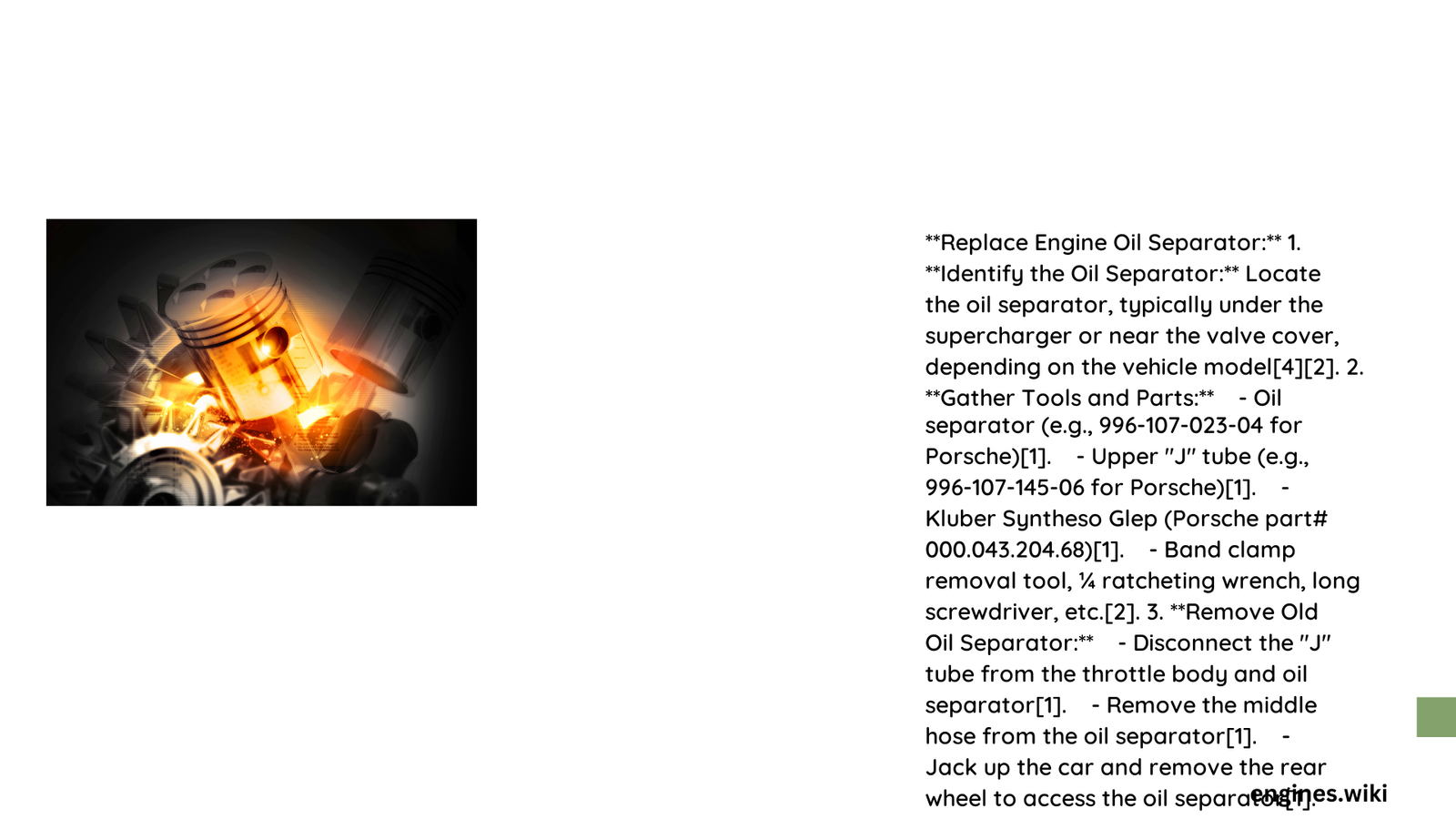Engine oil separators play a critical role in maintaining optimal engine performance by preventing oil contamination and managing crankcase pressure. When these components fail, they can lead to significant engine complications, including increased oil consumption, performance degradation, and potential long-term mechanical damage. Understanding the precise replacement process, recognizing failure symptoms, and executing a methodical replacement strategy are essential for vehicle owners seeking to maintain their engine’s health and longevity.
What Are the Signs of a Failing Engine Oil Separator?
Diagnostic Indicators
- Persistent oil leaks around engine components
- Unexplained drop in engine oil levels
- Increased blue smoke from exhaust
- Rough engine idling
- Check Engine Light activation
Performance Symptoms
- Crankcase Pressure Anomalies
- Abnormal pressure readings
- Inconsistent vacuum measurements
-
Reduced overall engine efficiency
-
Oil Contamination Markers
- Oil accumulation in throttle body
- Excessive oil consumption
- Compromised intake system integrity
What Tools Do You Need for Replacement?

Essential Equipment
- Safety glasses
- Mechanic’s gloves
- Socket wrench set
- Jack and jack stands
- Torque wrench
- Specialized lubricant (Kluber Syntheso Glep)
Recommended Diagnostic Tools
- Multimeter
- Pressure gauge
- Compression tester
How to Perform Engine Oil Separator Replacement?
Preparation Stage
- Vehicle Preparation
- Ensure engine is cool
- Disconnect battery
- Lift vehicle safely
-
Locate oil separator position
-
Removal Process
- Disconnect associated hoses
- Remove mounting bolts
- Extract existing separator carefully
Installation Procedure
- Clean mounting surface thoroughly
- Inspect surrounding components
- Apply recommended lubricant to O-rings
- Position new separator precisely
- Reconnect all tubes and hoses
- Torque bolts to manufacturer specifications
What Are Replacement Costs?
| Component | Cost Range | Replacement Complexity |
|---|---|---|
| Parts | $100 – $400 | Moderate |
| Labor | $200 – $600 | High |
| Total Replacement | $300 – $1000 | Variable |
What Factors Influence Replacement Complexity?
Vehicle-Specific Considerations
- Make and model
- Engine configuration
- Accessibility of components
- Technician’s expertise
- Required specialized tools
Potential Complications
- Integrated system design
- Precision alignment requirements
- Potential additional component replacement
- Need for specialized diagnostic equipment
Maintenance Recommendations
Preventative Strategies
- Regular oil analysis
- Periodic pressure system checks
- Timely component inspections
- Follow manufacturer maintenance schedules
Long-Term Benefits
- Enhanced engine performance
- Reduced unexpected repair costs
- Extended engine lifespan
- Improved overall vehicle reliability
Expert Tips
- Always use manufacturer-recommended replacement parts
- Do not compromise on quality for cost savings
- Consider professional installation for complex models
- Maintain detailed service documentation
Conclusion
Replacing an engine oil separator requires technical knowledge, precise execution, and systematic approach. While DIY enthusiasts can attempt the replacement, professional consultation ensures optimal results and prevents potential mechanical complications.
Reference:
– https://sites.google.com/site/mikefocke2/airoilseparatorreplacement
– https://klifex.ua/en/membrana-maslootdelitelya-princip-raboty-kak-zamenit-gde-kupit
– https://www.audizine.com/forum/showthread.php/855503-PCV-Oil-Separator-replacement-DIY-writeup-pics-and-tips
